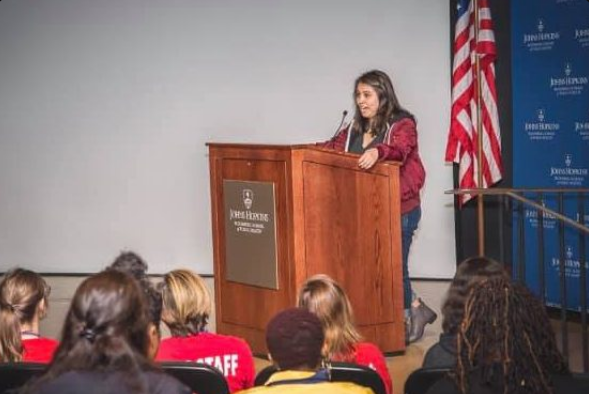Long Story, Short
- Established relationships with stakeholders from corporate, educational, governmental, health, and activism sectors as well as community members from gentrification “hot spots” determined by Geographic Information System (GIS) mapping.
- Conducted In-Depth Interviews with stakeholders about their experiences with population demographic changes in their communities and the displacement of their clientele.
- Developed a qualitative thematic analyses procedure to capture the stories of the participants accurately and to effectively communicate those findings to policymakers and community providers in all sectors.
- Fortified stakeholder relationships by conducting ongoing presentations of the study findings and ensuring equitable access to the information acquired through the study.
Long Story… Not So Short
In a study published in 2024, Dr. Sabriya Linton, et al. utilized Geographic Information System (GIS) mapping to detect spatial concentrations of the following variables and analyze any occurring overlaps in Atlanta, GA from the year 2005 to 2018: STIs, gentrification, racial and income segregation, and rental cost burden.


Dr. Linton used the data from this study to inspire an accompanying study regarding the stakeholders in these areas of overlap. These areas of gentrification and STI rates based on race and income raised some research questions that Dr. Linton’s initial study hadn’t answered…
How has gentrification in Atlanta, GA impacted the service providers in areas with high concentrations of displaced residents?
That’s where I entered the picture.

Our team, consisting of Dr. Sabriya Linton, Dr. Kimberly Arnold, and I, began to develop an approach to answering this broad and exploratory question. We wanted to ensure that our methodology was precise enough to draw an appropriate conclusion but also flexible enough to adapt to new information if needed.
To determine our methodology, we first had to determine who exactly would be included in our target study population. Our research question sought to determine the impact of gentrification on “service providers”, but who do we categorize as a “service provider” and how were we to decide?
We had to decide who to include in our study population by putting those whom we wanted to serve at the center.
Because we wanted to serve those in Atlanta who had been displaced, our study population had to be those in the community who may have had the most direct contact with individuals most likely to be displaced due to gentrification. This meant that we wanted to focus on providers with direct contact to high-risk community members, primarily lower income and brown and Black individuals as these demographics are often correlated with higher risk of displacement. We also decided to define “services” as public services to include the broad scope of the needs of the populations in question. Now, we just needed to find participants. That’s the easy part, right?
Using the GIS mapping results from Dr. Linton’s previous study, we focused on hot zone areas with high density of STI cases and high levels of community changes due to gentrification. Then we contacted every public service organization we could find that primarily serves our key demographics. This included organization in various sectors such as education, healthcare, law enforcement, and housing, among others. While many individuals were contacted, very few responded.
We had to adapt to a lack of participant responses in the midst of a global pandemic by adjusting our recruitment methods and expanding our inclusion criteria.
Because cold e-mailing did not provide the number of participants that we had anticipated, we had to pivot our approach and intentionally utilize the resources available to us. We decided to use snowball sampling by finding additional participants through our initial participants. Our first couple of participants were academics who serve high-risk populations in various metro Atlanta neighborhoods, and as such were able to function as trusted connections to additional participants. Based on information from our initial participants, we also expanded our inclusion criteria to include participants from sectors we hadn’t previously considered, such as the business and political sectors.
By pivoting to snowball sampling, we enrolled enough participants to reach saturation for our study, and we were able to develop a deeper understanding of the circumstances influencing and being influenced by gentrification in metro Atlanta. Including participants from the business and political sectors as well as those with wide-ranging ideologies allowed our team to minimize potential bias in our conclusions from interconnected participants.
My main priority for this study was to make certain that our conclusions accurately reflected the stories told by the participants and the range of perspectives within the community.
To ensure high quality and accurate conclusions, we made our data collection process comprehensive by utilizing in-depth interviews with individual participants and asking open-ended questions that allowed participants to express their thoughts without any encumberment.
We also ensured that the questions asked of participants were unbiased. Because the subject matter may have held personal significance or elicit strong feelings from participants, it was imperative that I, as the interviewer, create a safe space for participants to express themselves freely. This was another motivation for which we decided to conduct individual in-depth interviews as opposed to focus groups, surveys, or other qualitative data collection methods.
Finally, the conclusions drawn from each participant’s interview was shared with the participant prior to publication so that they could review and confirm that we did in fact accurately reflect their perspectives. If participants had any concerns about our conclusions, they were given the opportunity to offer feedback which we then implemented into our final product.
Once we had concluded our study, we decided on the best ways present and disseminate the information based on the needs of the relevant stakeholders.
We used multiple methods to disseminate information. For academics, researchers, policy makers, and other large scale changemakers, we wrote a peer-reviewed research paper and submitted to social science journals (Linton, Cruz, Arnold, 2024). For community members and other stakeholders, we held virtual townhalls at which we presented a slideshow summarizing the key findings of the study and offered time for Q&A with attendees.
The subject matter of this study was rooted in existing social disparities between populations due to social status, financial means, and access to resources among others. This made it especially important that we, as researchers, appropriately adapted our study to various audiences. Our recruitment, data collection, and data integrity methods had to be adapted to our study participants and the presentation of our findings had to be adapted to both an academic and a layman’s audience.
This study reinforced the core research value that has been at the core of my work in various research projects over the years:
- Obstacles will always arise, but obstacles can lead to opportunities.
- People must remain at the center of consumer based research and engaging various populations is key to comprehensive findings.
- Research is ongoing and continuous feedback throughout the process can only make your work stronger.
